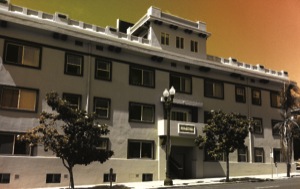
The LGBT community has made tremendous progress toward equality during the last decade. With much more to accomplish, one of the most tragic issues lesbian, gay, bisexual and transgender communities locally, nationally and globally face, is youth homelessness. Our community’s youth continue to face severe and heart-wrenching challenges and difficulties.
“Think of it this way,” said Delores Jacobs, CEO of The San Diego LGBT Community Center. “Most estimates put the LGBT community in urban communities at 9-14 percent of the population, yet 25 percent – 40 percent of the homeless youth in those same areas identify as LGBT – double to quadruple our overall population ratio. Some might call that figure horrifying.
“It’s a sad and ironic truth that the rallying cry of anti-LGBT groups is ‘protect the children,’” Jacobs continued. “Because they certainly aren’t protecting ours. Our youth continue to be mistreated and left unprotected. They are too often betrayed, wounded and thrown out by their schools, their communities and their families. The Center’s Sunburst Youth Housing Project is dedicated to protecting these youth, who have been so damaged by the very people and institutions who are charged to care for them.”
The Sunburst Youth Housing Project was created after The Center and several key public figures and groups undertook a rigorous needs assessment of homeless LGBT youth in the San Diego area, and several years of detailed and conscientious planning. Sunburst provides supportive housing for formerly homeless San Diego youth between the ages of 18 and 24, with a special needs focus on LGBT and HIV-positive young people.
There are 23 apartments within the Sunburst building, which is located in downtown San Diego.
“Many of our Youth Housing Project residents cite their sexual orientation and/or their gender identity as one of the primary reasons for their homelessness,” said Beth Barnes, The Center’s director of operations and quality assurance. “All of our residents have had at least one clinically-defined traumatic experience in their lives. Many have highly unstable family histories and have experienced abuse in all forms, and untreated or undiagnosed mental illness or substance abuse in at least one parent. They have suffered with serious challenges themselves, ranging from major depression to post-traumatic stress disorder or anxiety disorders. Almost half have struggled with substance use or HIV infection.
“I share those numbers so people can understand the devastating impact of homophobia, abuse, neglect and homelessness,” Barnes explained. “They do not have these serious challenges to deal with because they are LGB or T, but because of how their families, their schools, their neighborhoods and their churches, etc. have dealt with the fact that they are LGB or T.”

LGBT youth living on the streets face significant obstacles, in addition to survival.
Homeless LGBT youths are frequently charged by the police for sleeping in public places or prostitution, which some might more accurately describe as “survival sex.”
The primary goal of programs like the Youth Housing Project is to get young people into stable housing so that work can effectively begin on other issues. The Center for American Progress estimates that it costs $53,665 per year to maintain a young adult in the criminal justices system, but only a fraction of that to move them off the streets and into supportive housing.
According to experts, a youth who has been homeless for two years needs special support to leave behind the world of the streets. Sunburst offers much of that support. Once taken in by the program, however, new challenges face the formerly homeless LGBT youth. Suddenly, instead of her day-to-day life being consumed with basic survival, she is asked to imagine a future beyond the immediate. That’s a proposition that is more challenging than it sounds. Many simply can’t envision a life other than one based in survival mode.
At Sunburst, support is provided by a team of specially trained professionals who provide case management and a full spectrum of supportive services to residents. Services and programs available through the program range from mental health counseling; employment readiness training and basic life skills training (which includes cooking, grocery shopping, personal hygiene, taking care of an apartment, etc.) to basic budgeting and financial skills.
Additionally, residents get access to medical and dental care. Sunburst also supports the educational goals of its youthful residents, whether those goals are simply obtaining a GED or high school diploma, or going on to vocational training or college and university enrollment.
In the immediacy, Youth Housing Project staff work closely with residents to set achievable short-term goals. One important objective is to help residents obtain employment as soon as possible and develop employment goals and plans for how to achieve them. Case managers work with residents to help them make these plans and carry them out by working on resume writing, interviewing skills and assisting with job searches.
“While we are not able to report success for all residents, we have seen amazing and inspiring transformations,” said Barnes. “The past stories of most of these youth would bring you to tears – the despair, the hardship, the family rejection. But now their stories are about the present and their future, and those can also bring you to tears. They are so determined, willing to learn and work hard to achieve goals they had never dreamed were possible. Their resilience is simply stunning. Watching them work toward creating a better, independent life for themselves is just one measure of their courage.”











